Key Takeaways
- Cantrips like Ray of Frost, Green Flame Blade, and Shocking Grasp enhance spellcasters’ combat abilities in D&D.
- Spells like Prestidigitation, Booming Blade, and Shillelagh provide versatile and powerful options for spellcasters.
- Utility Cantrips such as Light, Message, and Minor Illusion offer strategic advantages and creative opportunities.
Spellcasters such as the Wizard in Dungeons & Dragons rely on their wealth of Spells to aid them inside and outside of combat. Moreover, these spells grow in intensity and magnitude as these Spellcasters grow in power as well. Technically, D&D Spellcasters who rely on higher-level Spells expend more Spell Slots to pull off these incredible magical feats.

Related
10 Ways The Elder Scrolls Could Be A Dungeons & Dragons 5e Campaign Setting
The realm of Tamriel has enough lore, intrigue, and history to make Elder Scrolls the perfect setting for a Dungeons & Dragons 5e campaign.
However, spellcasters new and old will almost always rely on a handful of Cantrips to get the job done. After all, these spells don’t cost Spell Slots, and spellcasters can cast them whenever they wish. But, just which Cantrips prove more useful than others?
Updated November 27, 2024 by Rhenn Taguiam: With the updated Player’s Handbook for Fifth Edition spicing up Dungeons & Dragons gameplay with revamped mechanics and overhauled gameplay for most of the Classes, fans of the acclaimed TTRPG will have a wild ride figuring out the best builds for their characters now that their Classes can do wildly different things. This added dynamism and flexibility can freshen up one’s experience with D&D – and this can greatly affect Spellcasters, whose specialization with a lot of Spells can make their gameplay more dynamic than ever.
Chief among the parts of their arsenal would be their Cantrips, some of which dominate more than others. Among must-try Cantrips for Spellcasters include a freezing ray, the ability to create a magical blade, a grasp that stops an opponent from reacting, and transforming insults into deadly attacks.
1 Ray Of Frost
Nifty Spell Attack With Movement Debuff
|
Level, Type |
Evocation Cantrip |
|---|---|
|
Casting Time |
Action |
|
Range |
60ft |
|
Target |
Creature in range |
|
Components |
Verbal, Somatic |
|
Duration |
Instantaneous |
|
Classes |
Artificer, Sorcerer, Wizard |
Cantrips have become a staple in any Spellcaster’s arsenal in Dungeons & Dragons gameplay, especially since they give casters the equivalent of combat efficiency that their martial counterparts are known to possess. Such a go-to Cantrip in this regard is Ray of Frost, an Evocation Cantrip accessible to Artificers, Sorcerers, and Wizards for its innate efficiency.
When cast, the Spell shoots a beam of freezing light toward a target within range. A successful Spell Attack against the target yields 1d8 Cold Damage and reduces the target’s speed by 10 feet. Despite its straightforward movement debuff, the 10-foot difference in distance traveled during the target’s next turn can mean safety for party members closest to them.
2 Green Flame Blade
Turn Any Weapon Into A Flaming Variant
|
Level, Type |
Evocation Cantrip |
|---|---|
|
Casting Time |
Action |
|
Range |
Self |
|
Target |
The wielder’s weapon |
|
Components |
Somatic, Material (a melee weapon) |
|
Duration |
Instantaneous |
|
Classes |
Artificer, Sorcerer, Warlock, Wizard |
The common imagery associated with an enchanter would be their imbuing of a weapon with magical properties, something Green Flame Blade represents in Dungeons & Dragons gameplay. This Evocation Cantrip evokes mystical flames to inhabit the weapon held by the Spellcaster, causing it to appear as soon as the caster attacks with it.
When a Green Flame Blade lands a hit on a target, the enchanted weapon deals its regular damage. However, the Spellcaster can cause green flame to leap from the target to another creature within five feet, with the second target suffering damage equal to the Spellcaster’s Spellcasting Ability Modifier. At 5th Level, the melee attack will now cause +1d8 Fire Damage, and the leaping fire will damage the second target with 1d8 + Spellcasting Ability Modifier. At 11th-Level, both damage rolls become +2d8, and at 17th-Level will become +3d8.
3 Shocking Grasp
Stop A Foe From Reacting
|
Level, Type |
Evocation Cantrip |
|---|---|
|
Casting Time |
Action |
|
Range |
Touch |
|
Target |
Creature in melee range |
|
Components |
Verbal, Somatic |
|
Duration |
Instantaneous |
|
Classes |
Artificer, Sorcerer, Wizard |
Being on the receiving end of a melee attack can be the worst thing that can happen to a Spellcaster in the thick of combat, and Shocking Grasp is one of the best defenses they could have against an opponent in melee range. When cast, a Spellcaster touches a target to deliver a shock.
The user then has to make a Spell Attack, which has advantage if the target is wearing metal armor. If the Spell Attack hits, the opponent takes 1d8 Lightning Damage and may not make Reactions until the beginning of their next turn. This damage becomes 2d8 at 5th-Level, 3d8 at 11th-Level, and 4d8 at 17th-Level. The Spell becomes a particularly useful countermeasure when enemies are at melee range, as the Spellcaster can disengage safely without provoking an Opportunity Attack.
4 Vicious Mockery
Words That Literally Hurt
|
Level, Type |
Enchantment Cantrip |
|---|---|
|
Casting Time |
Action |
|
Range |
60ft |
|
Target |
Creature that can see and hear the caster |
|
Components |
Verbal |
|
Duration |
Instantaneous |
|
Classes |
Bard |
One of the most hilarious associations with the Bard would be Vicious Mockery, a Cantrip that serves as the magical representation of words that can literally hurt foes. When cast, Vicious Mockery lets the Bard fling a string of insults that can potentially damage opponents. If they fail a WIS Save, the target takes 1d4 Psychic Damage and has Disadvantage on the next Attack Roll it takes on its next turn.
Bards who don’t want to make a weapon attack can use Vicious Mockery to deal slight damage but dampen the combat prowess of an enemy – something they can use against stronger foes or even bosses. Dungeon Masters may even provide plus points for players who can actually say what kinds of insults they want to fling at opponents.
5 Prestidigitation
A Useful Tool For Fast Illusions
|
Level, Type |
Transmutation Cantrip |
|---|---|
|
Casting Time |
1 Action |
|
Range |
10ft |
|
Target |
– |
|
Components |
Verbal, Somatic |
|
Duration |
1 Hour |
|
Classes |
Artificer, Bard, Sorcerer, Warlock, Wizard |
Spellcasters who want to impress even the most timid of audience members in D&D 5e gameplay can always rely on Prestidigitation to pull off a neat trick. When cast, this Transmutation Cantrip can create up to three harmless sensory effects or small illusory images that may be enough to fool enemies and targets.
Among the Classes that can use this Cantrip, Prestidigitation is among the most flexible small-scale Spells that players need to master to pull off inexpensive effects that last for an extremely short while. These range from anything that can grab the enemy’s attention or distract others during a heist, where getting caught can often mean life or death.
6 Booming Blade
Enhance A Weapon With Roaring Sound
|
Level, Type |
Evocation Cantrip |
|---|---|
|
Casting Time |
1 Action |
|
Range |
Self (5 Feet) |
|
Target |
Self, Melee Weapon |
|
Components |
Somatic, Material (Melee Weapon at least 1 SP) |
|
Duration |
1 Round |
|
Classes |
Artificer, Rogue, Sorcerer, Warlock, Wizard |
It’s not all the time that a Cantrip in D&D gameplay can deal damage, which is why Booming Blade can be quite an attractive option for players who want to give their spellcasters some advantage in melee combat. At its core, hitting a target with a melee attack with a Booming Blade will now sheathe them with energy. If they move at least 5 feet before the player’s next turn, they take 1d8 Thunder Damage. At 5th-Level, hitting an enemy with this spell in effect now deals 1d8 Thunder Damage, and moving deals +1d8 Thunder Damage. Reaching 11th and 17th Level will enhance these effects by +1d8 Thunder Damage, both on hit and when moving.
What makes Booming Blade such an interesting option for characters is the way it acts as a mini-buff to a weapon without expending a Spell Slot. At the hands of a Rogue, using Booming Blade and then attacking a foe before using Cunning Action to retreat makes the Cantrip into an efficient hit-and-run weapon. Not only that, taunting the enemy to follow players will then cause extra damage, potentially eliminating pesky mobs.
7 Shillelagh
A Druid’s Nifty Melee Enhancer
|
Level, Type |
Transmutation Cantrip |
|---|---|
|
Casting Time |
1 Bonus Action |
|
Range |
Touch |
|
Target |
Wood of a Quarterstaff or CLub |
|
Components |
Verbal, Somatic, Material (Mistletoe, Shamrock Leaf, Club or Quarterstaff) |
|
Duration |
1 Minute |
|
Classes |
Druid |
Just because a Druid in Dungeons & Dragons has Wild Shape doesn’t necessarily mean they always have to rely on their alternate form to deal damage. With Shillelagh, even a mere Club or a Quarterstaff can become the Druid’s best asset, especially when this Cantrip can let the Druid use their Spellcasting Ability to roll for Attack and Damage as well as transforming the weapon into magical and its damage dice into d8 for the purposes of overcoming non-magical resistance.
However, the existence of Shillelagh doesn’t mean Druids have to be converted into melee fighters. Druids don’t have an innate Extra Attack, which limits their overall melee potential. Either way, keeping Shillelagh as an emergency option when running out of Wild Shape charges and being in dire need of a way to tackle combat can become a player’s ticket to survival.
8 Sacred Flame
A Nifty Attack Option For Clerics
|
Level, Type |
Evocation Cantrip |
|---|---|
|
Casting Time |
1 Action |
|
Range |
60 Feet |
|
Target |
A creature in range |
|
Components |
Verbal, Somatic |
|
Duration |
Instantaneous |
|
Classes |
Cleric |
Among Classes in Dungeons & Dragons, Clerics are often typecasted as support units and defenders. However, this isn’t always the case, especially if they use more combative spells such as Sacred Flame. When used, Clerics can summon fiery radiance toward a creature within range. Unless they succeed in a DEX Save, they take 1d8 Radiant Damage. The damage increases by +1d8 at 5th Level, 11th Level, and again at 17th Level.
Such is the damage potential of Sacred Flame that it’s the best Radiant Damage Spell in Dungeons & Dragons. Should players get the 3d8 Radiant Damage option at 11th Level, there’s no reason to keep using a weapon. Moreover, the spell works against most undead and can bypass cover, making it among the best damage sources a Cleric can have that doesn’t even cost a Spell Slot.
9 Eldritch Blast
The Go-To Damage Option For Warlocks
|
Level, Type |
Evocation Cantrip |
|---|---|
|
Casting Time |
1 Action |
|
Range |
120 Feet |
|
Target |
Creature within range |
|
Components |
Verbal, Somatic |
|
Duration |
Instantaneous |
|
Classes |
Warlock |
Perhaps among the most popular Spells in D&D history aside from Fireball and Magic Missile, Eldritch Blast is the go-to spell of Warlocks who simply want to dish out pain to opponents without complicating matters. When cast, Eldritch Blast is a ranged spell attack that can deal 1d10 Force Damage. Players can release more beams at higher levels, up to four at 17th Level – each of which players have to direct and make separate attack rolls.
What makes Eldritch Blast quite a must-have for Warlocks is its flexibility and versatility. The Spell becomes the highest-damaging Cantrip in the game with Agonizing Blast, and its Force Damage property means there aren’t a lot of creatures that can resist it. By the time players can get multiple attacks, Eldritch Blast can easily replace default weapons – and may even compensate for misses by repeatedly attacking a target.
10 Fire Bolt
A Ranged Option Better Than Most Weapons
|
Level, Type |
Evocation Cantrip |
|---|---|
|
Casting Time |
1 Action |
|
Range |
120ft |
|
Target |
Creature in Range |
|
Components |
Verbal, Somatic |
|
Duration |
Instant |
|
Classes |
Artificer, Sorcerer, Wizard |
A fiery bolt of arcane energy, Fire Bolt (Evocation) is easily one of the best ranged attacks a Spellcaster could get in their repertoire. When cast, this spell can hit a creature within 120ft with 1d10 Fire Damage. As an offensive Cantrip, this Spell also scales its damage, increasing at 5th Level (2d10), 11th Level (3d10), and 17th Level (4d10). It requires Verbal and Somatic components.
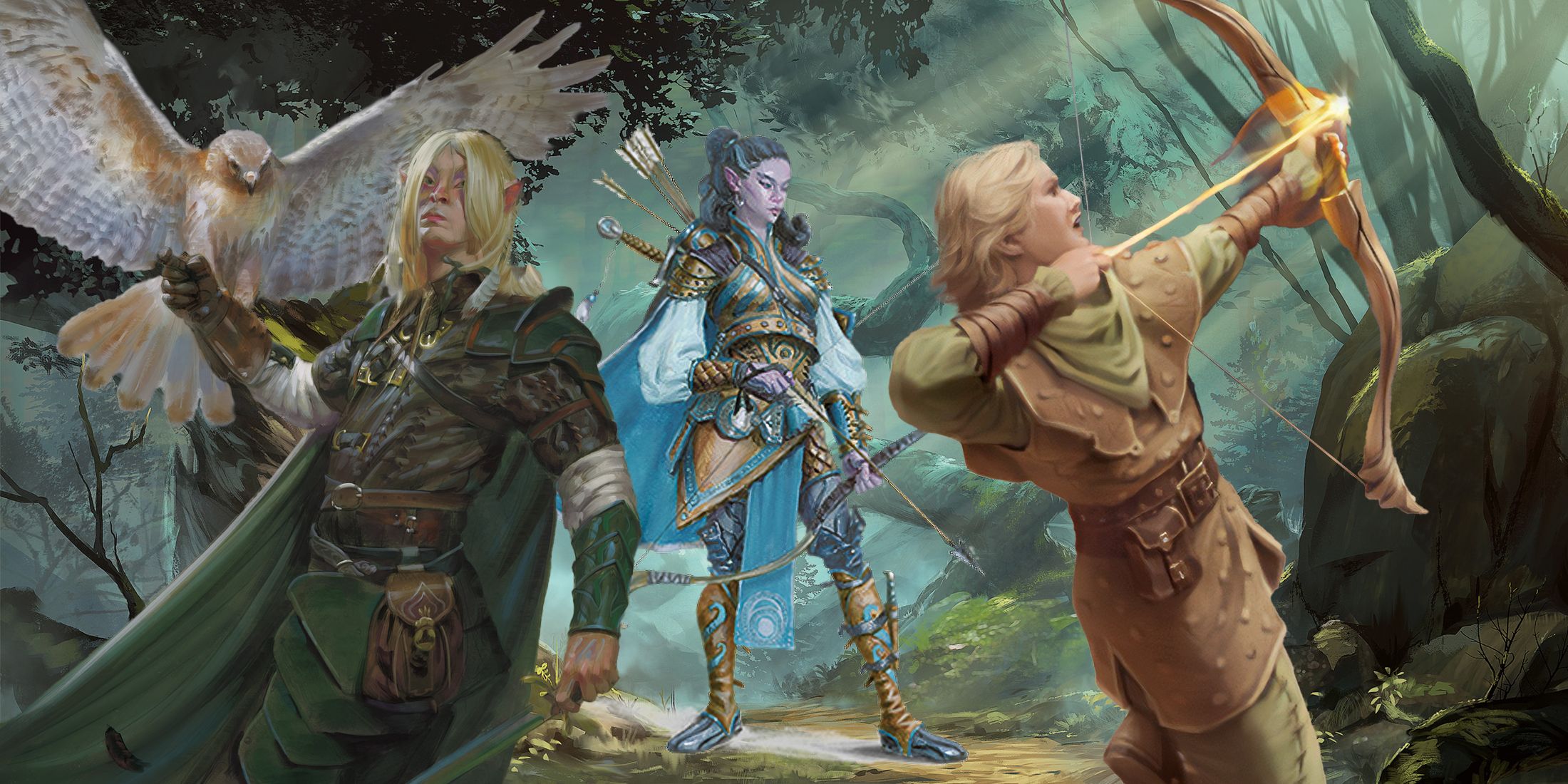
Related
Dungeons & Dragons 5e: Best Ranger Builds
Rangers aren’t always as highly-regarded as other Dungeons & Dragons classes, but the truth is they’re a formidable pick with the proper builds.
Fire Bolt is one of the best Cantrips a spellcaster can get if they need any offensive attacks. While Toll the Dead boasts more damage, Fire Bolt outclasses it through range. However, Fire Bolt loses its luster beyond 5th Level. A 14 Dexterity character with a Light Crossbow can do more damage than Fire Bolt.
11 Light
Illuminate Almost Any Area
|
Level, Type |
Evocation Cantrip |
|---|---|
|
Casting Time |
1 Action |
|
Range |
Touch |
|
Target |
Object not larger than 10ft |
|
Components |
Verbal, Material |
|
Duration |
1 Hour |
|
Classes |
Artificer, Bard, Cleric, Sorcerer, Wizard |
One of the most straightforward Spells out there, Light (Evocation) simply imbues an object not larger than 10 square feet with a magical light. For an hour, this Spell releases light around the object (20ft bright, 20ft dim). On the off-chance that the object is something a hostile creature wears, they need to succeed in a Dexterity Save to avoid the Spell. Its components are Verbal, and Material (phosphorescent moss or firefly).
Light always serves as one of 5e’s best Cantrips for its instant lighting option. Granted, this does take up space as a Prepared Spell. However, in situations where combat isn’t expected, Light can easily replace burdensome torches.
12 Message
Communicate In A More Clandestine Manner
|
Level, Type |
Transmutation Cantrip |
|---|---|
|
Casting Time |
1 Action |
|
Range |
120ft |
|
Target |
Creature in Range |
|
Components |
Verbal, Somatic, Material |
|
Duration |
1 Round |
|
Classes |
Artificer, Bard, Sorcerer, Wizard |
Due to the lack of internet in a fantasy world, Message (Transmutation) becomes the next best thing for instant messaging. When cast, this spell allows users to state a message that only their target can hear. This works within a range of 120ft and can bypass certain obstacles before reaching the target. To cast, it requires the following components: Verbal, Somatic, and Material (a copper wire).
Message is at best a situational Spell. However, in case of emergencies, even vaguely whispering a message solely for a single recipient can do wonders when party members can’t visibly interact in an area. Message works as a handy tool in espionage missions or when party members have to stay undercover.
13 Chill Touch
Disable Healing In Targets
|
Level, Type |
Necromancy Cantrip |
|---|---|
|
Casting Time |
1 Action |
|
Range |
120ft |
|
Target |
Creature in range |
|
Components |
Verbal, Somatic |
|
Duration |
1 Round |
|
Classes |
Sorcerer, Warlock, Wizard |
Chill Touch (Necromancy) allows another person to feel the cold release of death. With this Cantrip (requiring Verbal and Somatic components), a player conjures a skeletal hand that makes a ranged spell attack. If hit, the target not only receives 1d8 Necrotic Damage but also can’t receive healing until they start their next turn. When it hits an Undead, the target has Disadvantage on attacks against the caster. Its base damage increases at 5th Level (2d8), 11th Level (3d8), and 17th Level (4d8).

Related
Dungeons & Dragons 5e: Best Warlock Builds
Warlocks are a sometimes underestimated class in Dungeons & Dragons, but done well, they can be devastating spellcasters in their own right.
Despite the reduced damage compared to Fire Bolt, Chill Touch, and its healing-disabling effect can work great against enemies with healers. Moreover, the attack disadvantages against the Undead can make Chill Touch a handy tool when fighting such enemies in the early game.
14 Toll The Dead
Secure An Attack Not Many Foes Can Resist
|
Level, Type |
Necromancy Cantrip |
|---|---|
|
Casting Time |
1 Action |
|
Range |
60ft |
|
Target |
Creature in Range |
|
Components |
Verbal, Somatic |
|
Duration |
Instantaneous |
|
Classes |
Cleric, Warlock, Wizard |
Sometimes, the dead themselves make the living pay a price for existing. With Toll the Dead (Necromancy), a spellcaster produces the sounds of dolorous bells to a creature within 60ft. When cast, this Cantrip forces the target to roll a Wisdom Save. On a failure, they take 1d8 Necrotic Damage, or 1d12 if they’re missing any HP. On top of it all, Toll the Dead scales in damage at 5th Level (2d8/2d12), 11th Level (3d8/3d12), and 17th Level (4d8/4d12). It requires only Verbal and Somatic components.
Even with Toll the Dead’s short range, it’s very likely that enemies will get within 60 ft. to fight the players anyway. Moreover, due to its Necrotic Damage, it’s also very likely that not a lot of enemies can resist this attack.
15 Guidance
Help Others With Their Checks
|
Level, Type |
Divination Cantrip |
|---|---|
|
Casting Time |
1 Action |
|
Range |
Touch |
|
Target |
Willing Creature |
|
Components |
Verbal, Somatic |
|
Duration |
Concentration, 1 Minute |
|
Classes |
Artificer, Cleric, Druid |
Even the tiniest bit of divine providence can turn ordinary people into geniuses. Thanks to Guidance (Divination), Spellcasters can give that necessary “push” to motivate their companions to excel in an activity. Essentially, Guidance (Verbal, Somatic) bestows 1d4 to a willing creature the player can touch. They can then roll the Guidance die before or after they make an Ability check of the caster’s choosing.
The 1d4 boost can make the difference between life and death, especially when it comes to traps. As such, spellcasters should use Guidance as much as possible, especially on allies such as the versatile Ranger or the stealthy Rogue that frequently have to make skill checks outside battle.
16 Minor Illusion
Create Versatile Illusions
|
Level, Type |
Illusion Cantrip |
|---|---|
|
Casting Time |
1 Action |
|
Range |
30ft |
|
Target |
Object in Range |
|
Components |
Somatic, Material |
|
Duration |
1 Minute |
|
Classes |
Bard, Sorcerer, Warlock, Wizard |
Minor Illusion (Illusion) can serve as a spellcaster’s handy distraction in times of need. This Cantrip (Somatic, Material) enables Spellcasters to create an image or a sound within a 30ft range that can last for up to a minute. Sounds with Minor Illusion can range from anything within the user’s imagination. Images should fit a 5-foot cube and can create non-physical sensory effects. Touching the object or succeeding in an Intelligence (Investigation) check against the object reveals the illusion.

Related
Baldur’s Gate 3: 10 NPCs From Other 5e Campaign Settings That Should Make A Cameo
While Larian Studios’ Baldur’s Gate 3 is set in Dungeons & Dragons’ Forgotten Realms, that does not mean NPCs from other settings cannot show up.
Creative Spellcasters can do wonders with a 5-foot square. As such, Minor Illusion can pave the way for hiding spaces or even helpful distractions against opponents. Spellcasters in any Class should consider getting this Cantrip for handy illusions.
17 Mind Sliver
Attack With Psychic Damage
|
Level, Type |
Enchantment Cantrip |
|---|---|
|
Casting Time |
1 Action |
|
Range |
60ft |
|
Target |
Creature in Range |
|
Components |
Verbal |
|
Duration |
1 Round |
|
Classes |
Sorcerer, Warlock, Wizard |
The slightest disorientation can put anyone out of focus – sometimes with lethal consequences. The Mind Sliver Enchantment Cantrip (requiring Verbal components) enables casters to disorient the mind of a creature within 60ft, forcing them to make an Intelligence Saving Throw. If the creature fails the Save, it not only gets 1d6 Psychic damage but also gets a -1d4 penalty on its next Saving Throw before the end of the caster’s next turn.
Mild Sliver can easily become a powerful Cantrip in any Spellcaster’s repertoire. Immunity and resistance to Psychic damage is considered rare, and Intelligence is usually the dump stat of a lot of creatures. Moreover, the Save penalty can lead to more devastating effects caused by other members of the party.
18 Mage Hand
A Nifty Hand For Almost Any Situation
|
Level, Type |
Conjuration Cantrip |
|---|---|
|
Casting Time |
1 Action |
|
Range |
30 Feet |
|
Target |
Within Range |
|
Components |
Verbal, Somatic |
|
Duration |
1 Minute |
|
Classes |
Artificer, Bard, Sorcerer, Warlock, Wizard |
Spellcasters who need helping hands can use their arcane magic to summon a Mage Hand (Conjuration). This Cantrip (Verbal, Somatic) summons a spectral hand that floats at a point within 30 ft. With an action, the caster can manipulate an object up to 30 ft. away. However, casters can’t use Mage Hand to activate magical items, make attacks, or carry a weight of more than 10 pounds.
In most instances, Mage Hand becomes a godsend for players who want to do tasks that hold a considerable amount of risk. These include trying to steal relics from powerful NPCs, picking locks, or simply doing things from a distance without being noticed.
19 Shape Water
Use Water In A Variety Of Ways
|
Level, Type |
Transmutation Cantrip |
|---|---|
|
Casting Time |
1 Action |
|
Range |
30ft |
|
Target |
Within Range |
|
Components |
Somatic |
|
Duration |
Instantaneous, 1 Hour |
|
Classes |
Druid, Sorcerer, Wizard |
With Shape Water (Transmutation), casters can do a lot with just an area of water within 30 ft. that fits a 5-foot cube. For instance, this Cantrip (which uses Somatic components) lets casters change the flow or even move the target water up to 5 ft. in any direction. Moreover, such water can create shapes and become frozen or animated within an hour.
Shape Water serves as perhaps the most practical Spell out of the element-moving Cantrips. For instance, Shape Water can move boiling water, redirect water, or create visual cues for communication. Shape Water can also reduce opacity to search in muddy water or vice versa to hide objects. Lastly, freezing water can create bridges or block paths in tricky situations.
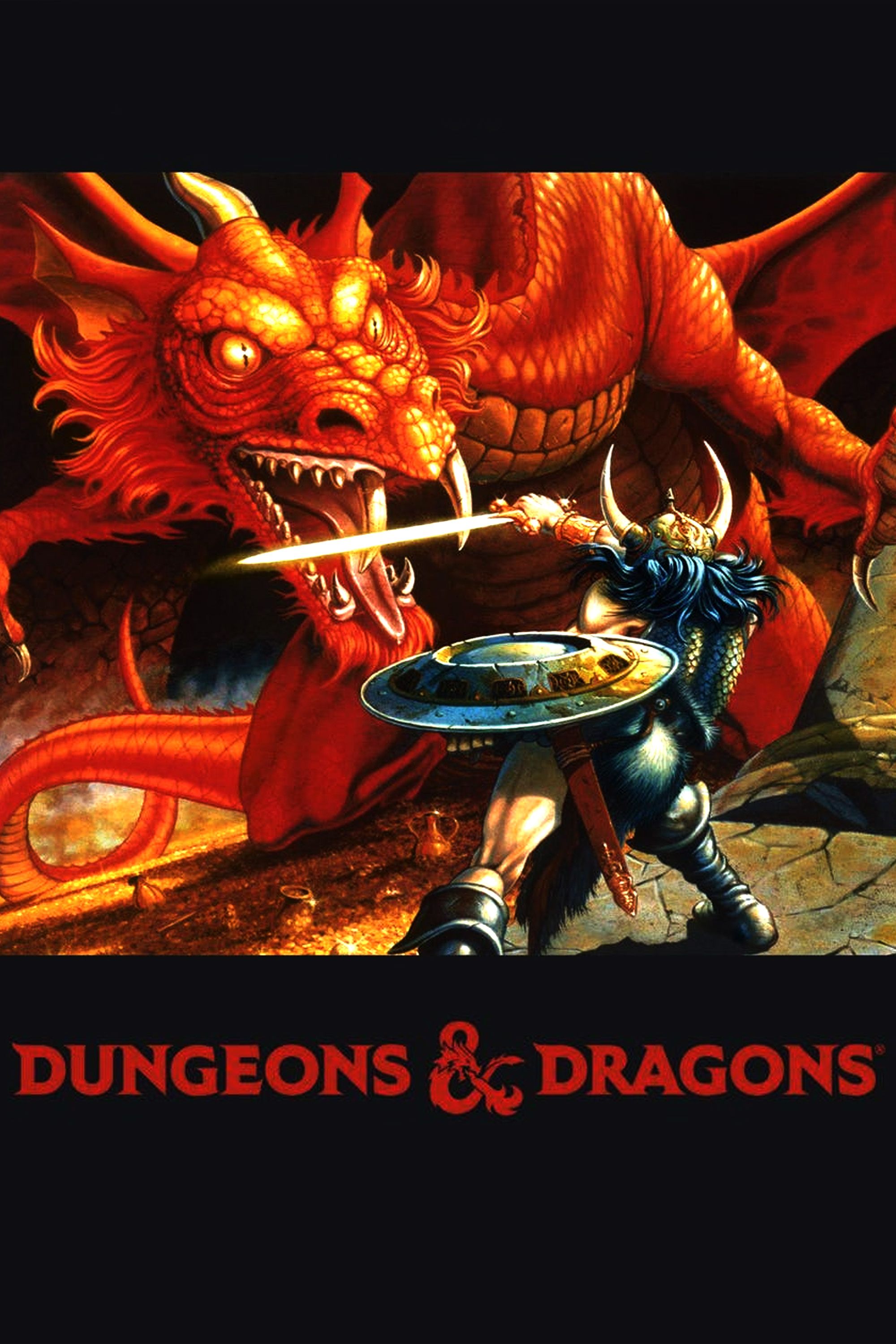
Dungeons and Dragons
- Original Release Date
- 1974-00-00
- Designer
- E. Gary Gygax , Dave Arneson
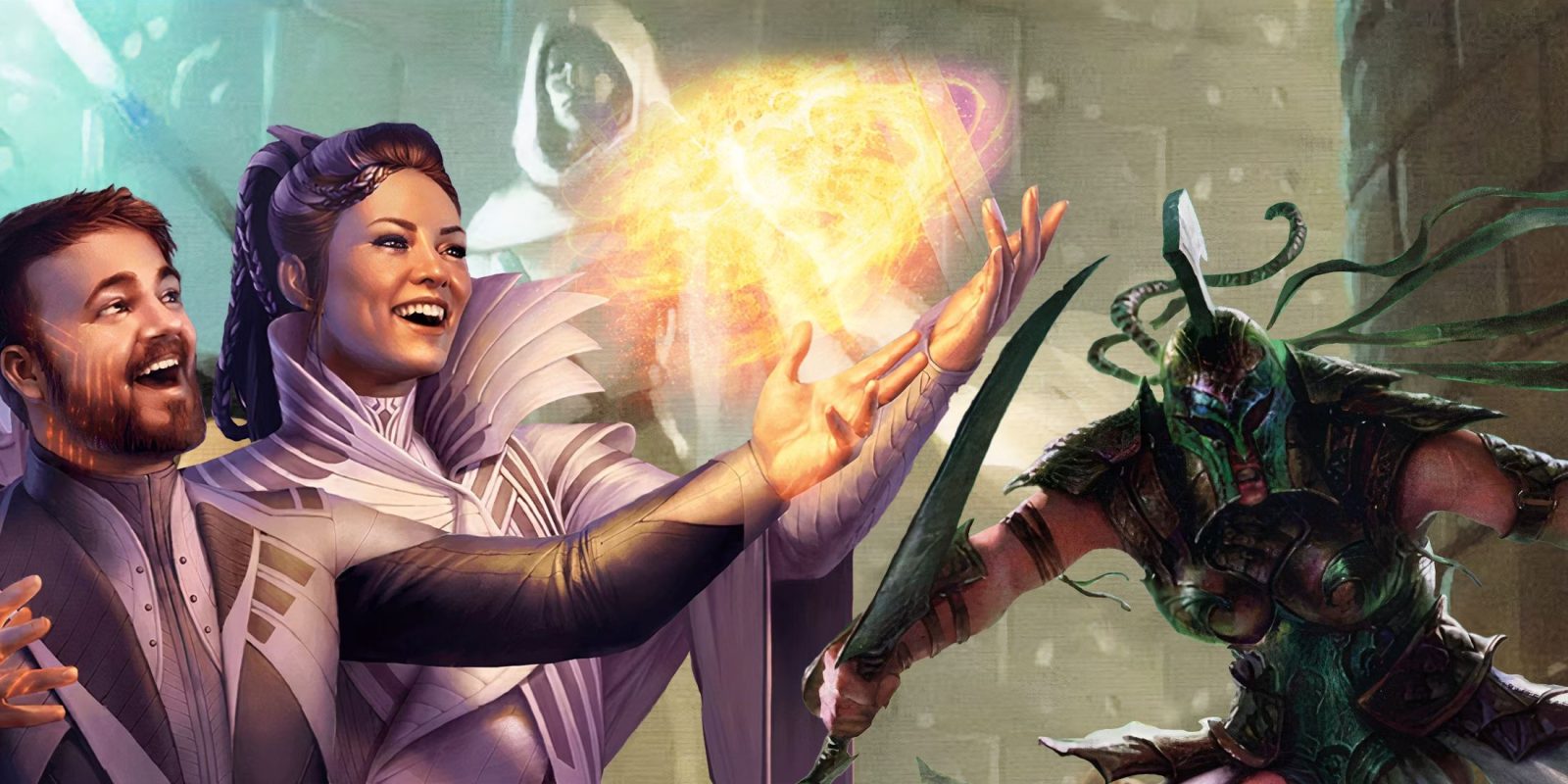

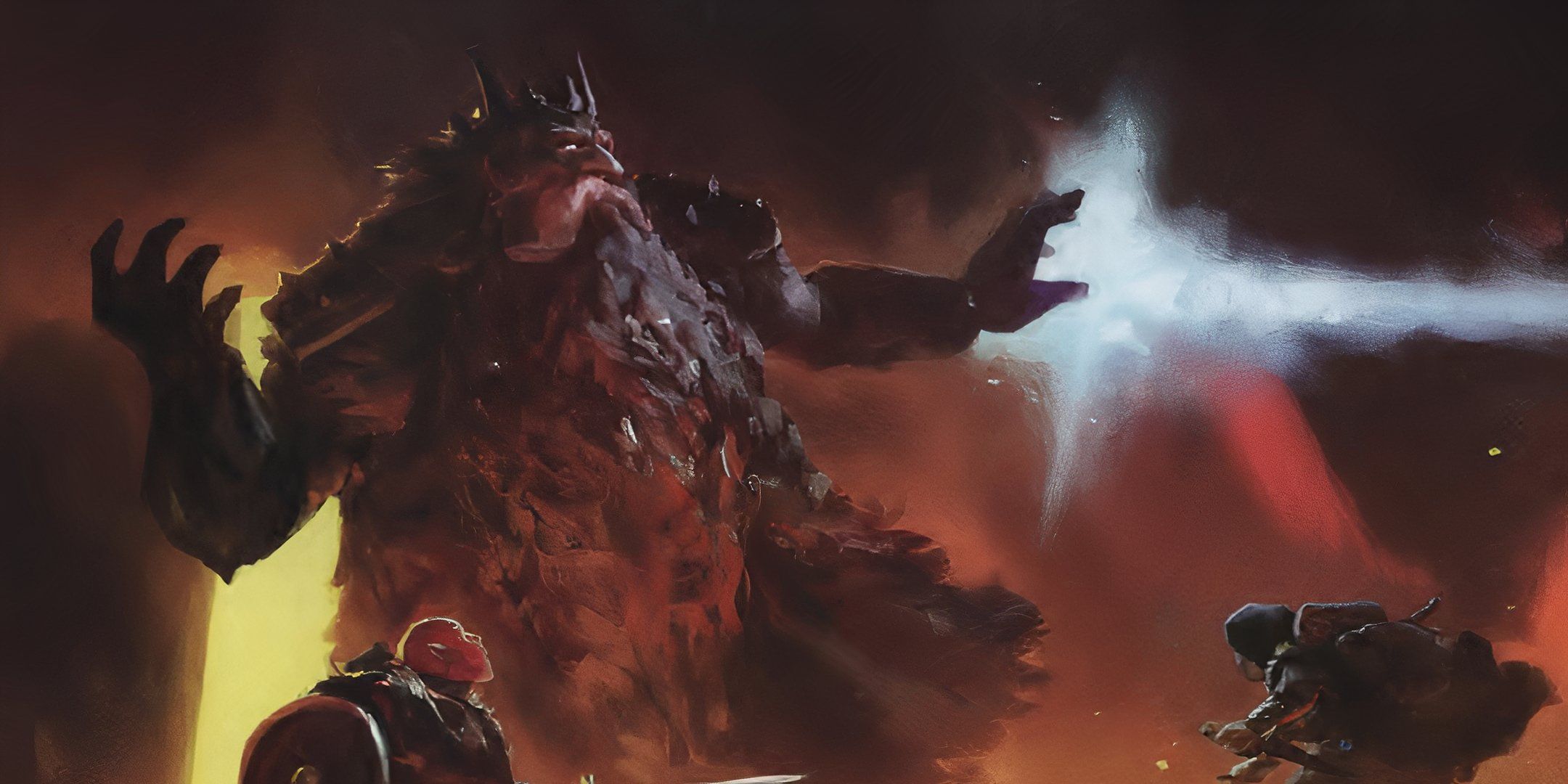
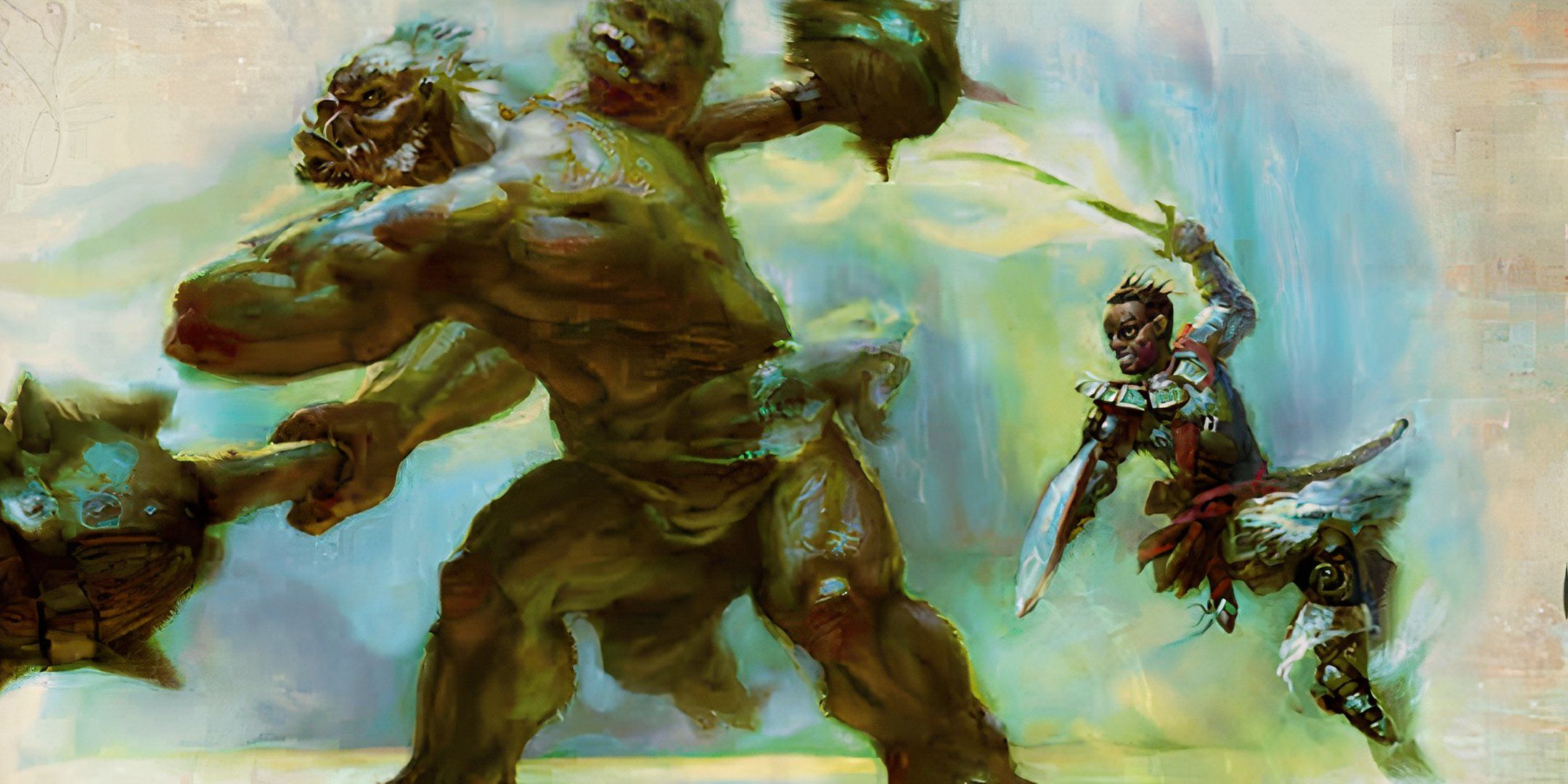
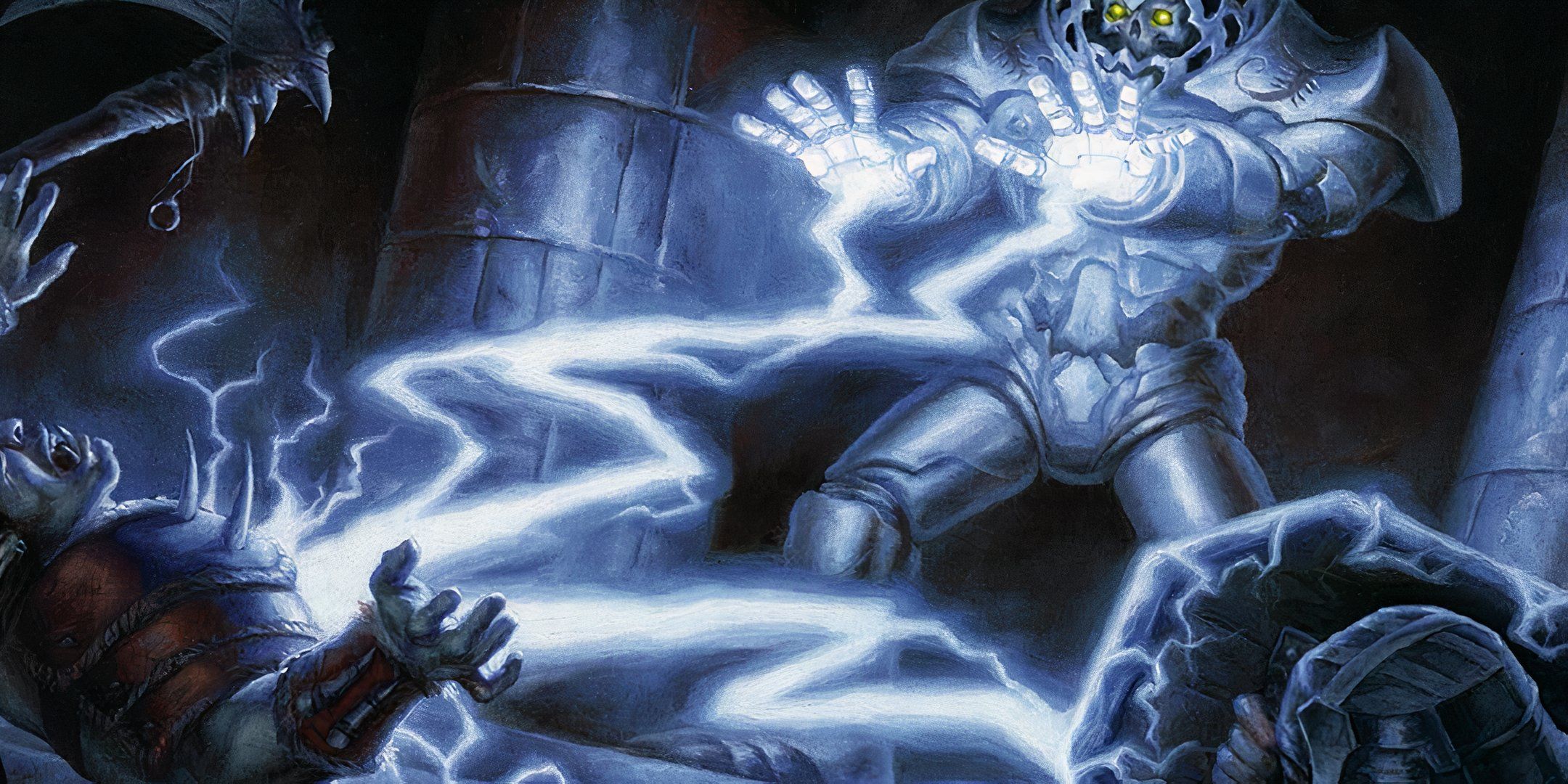
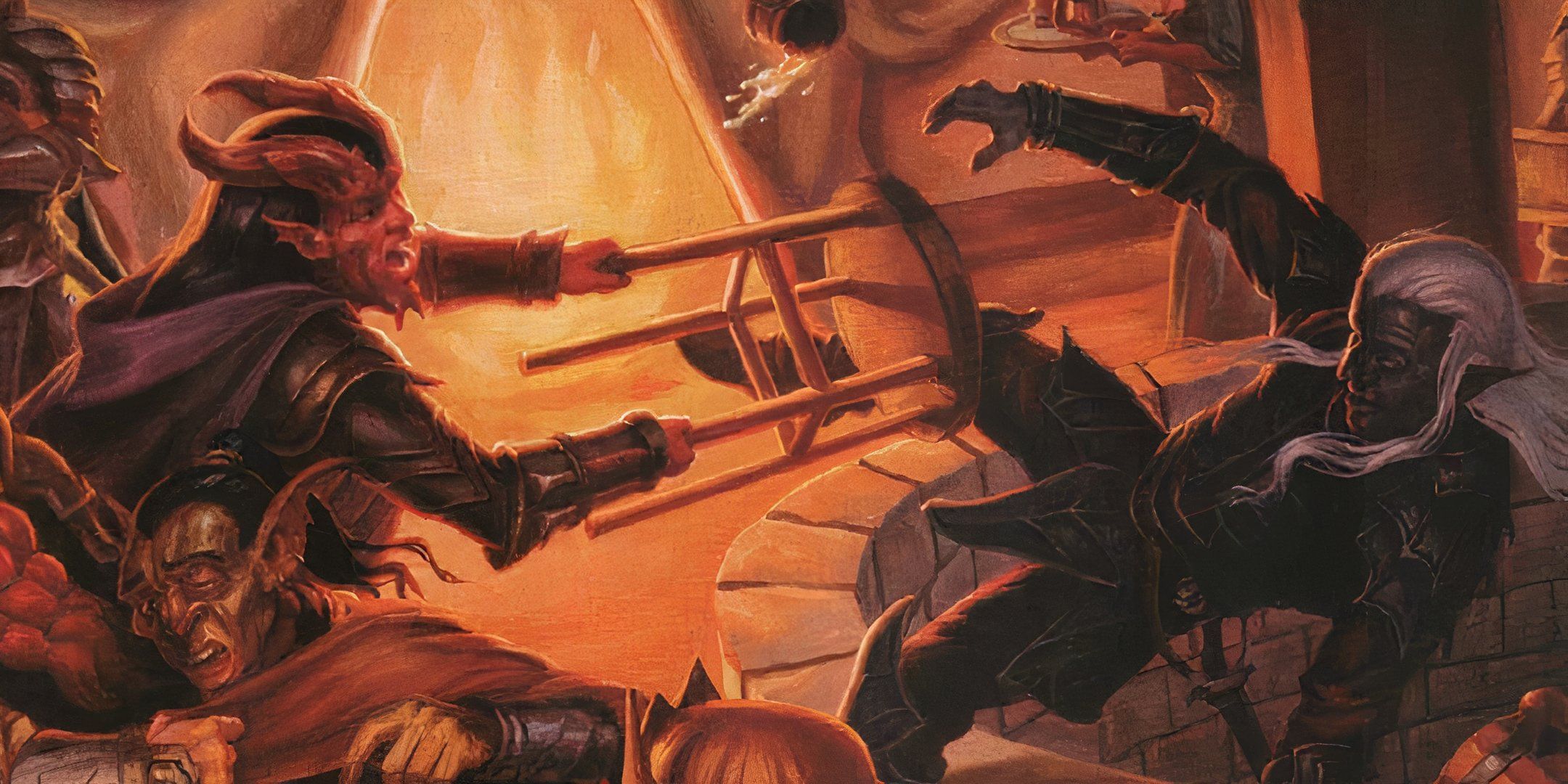

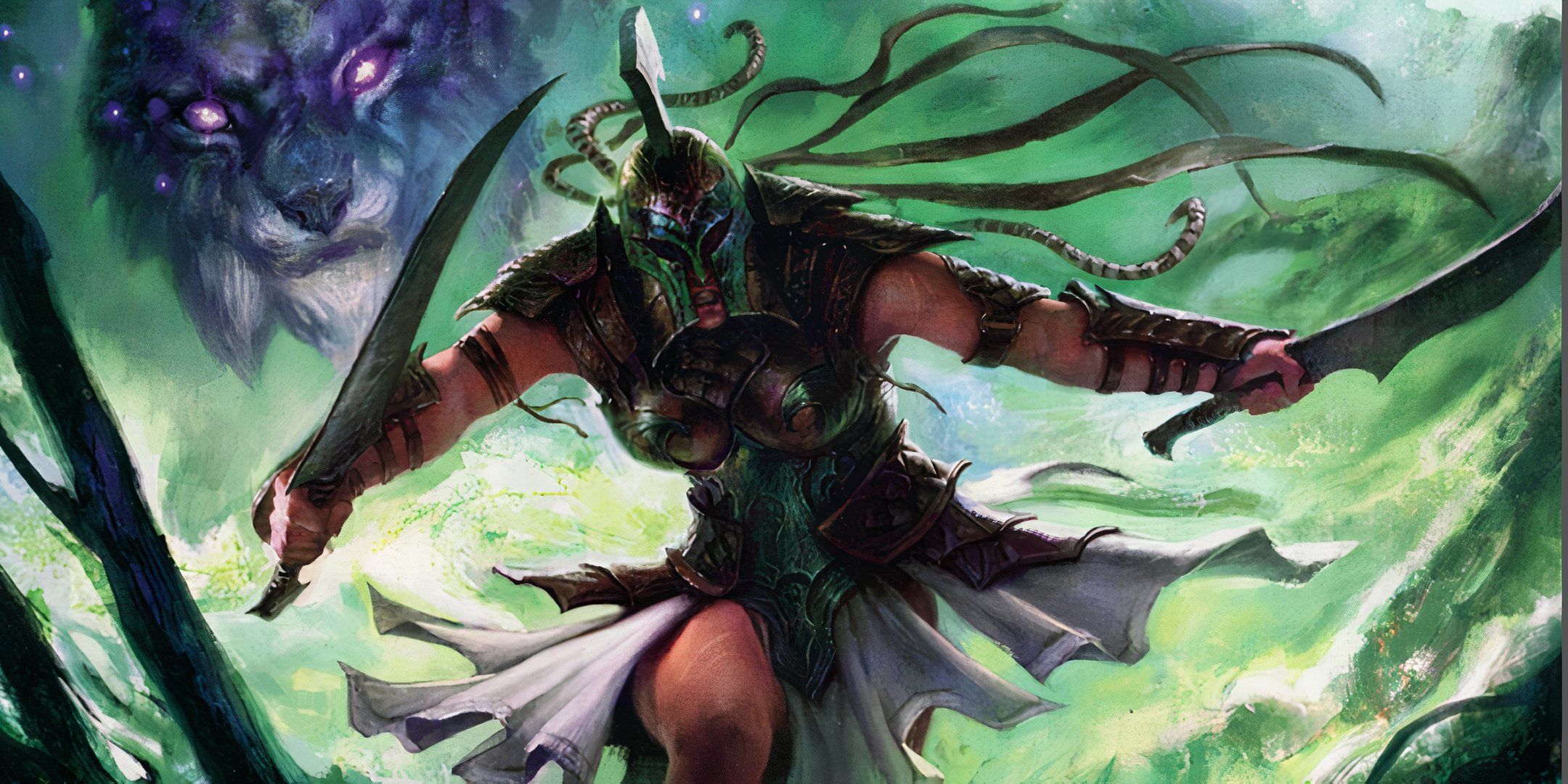

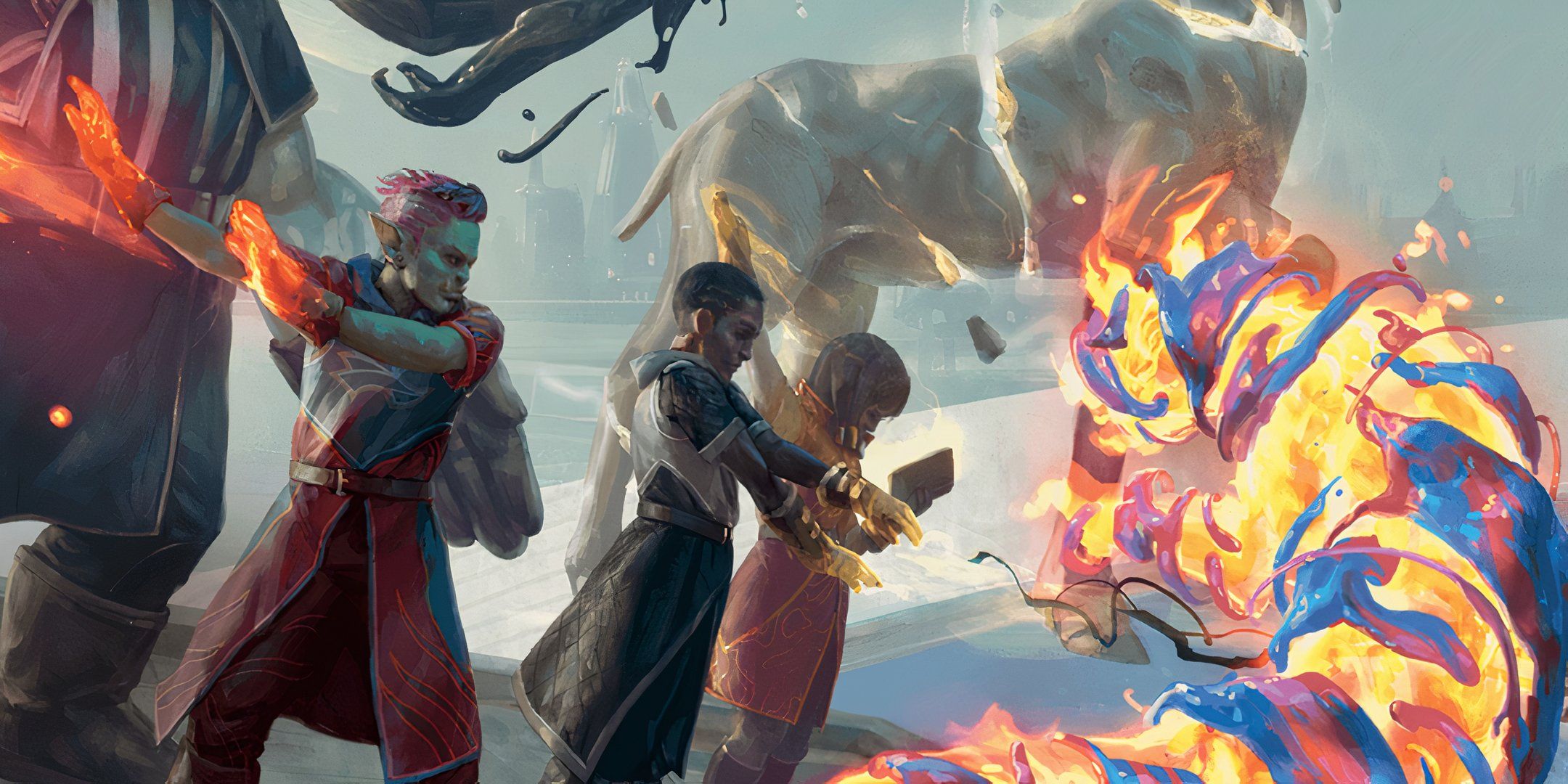
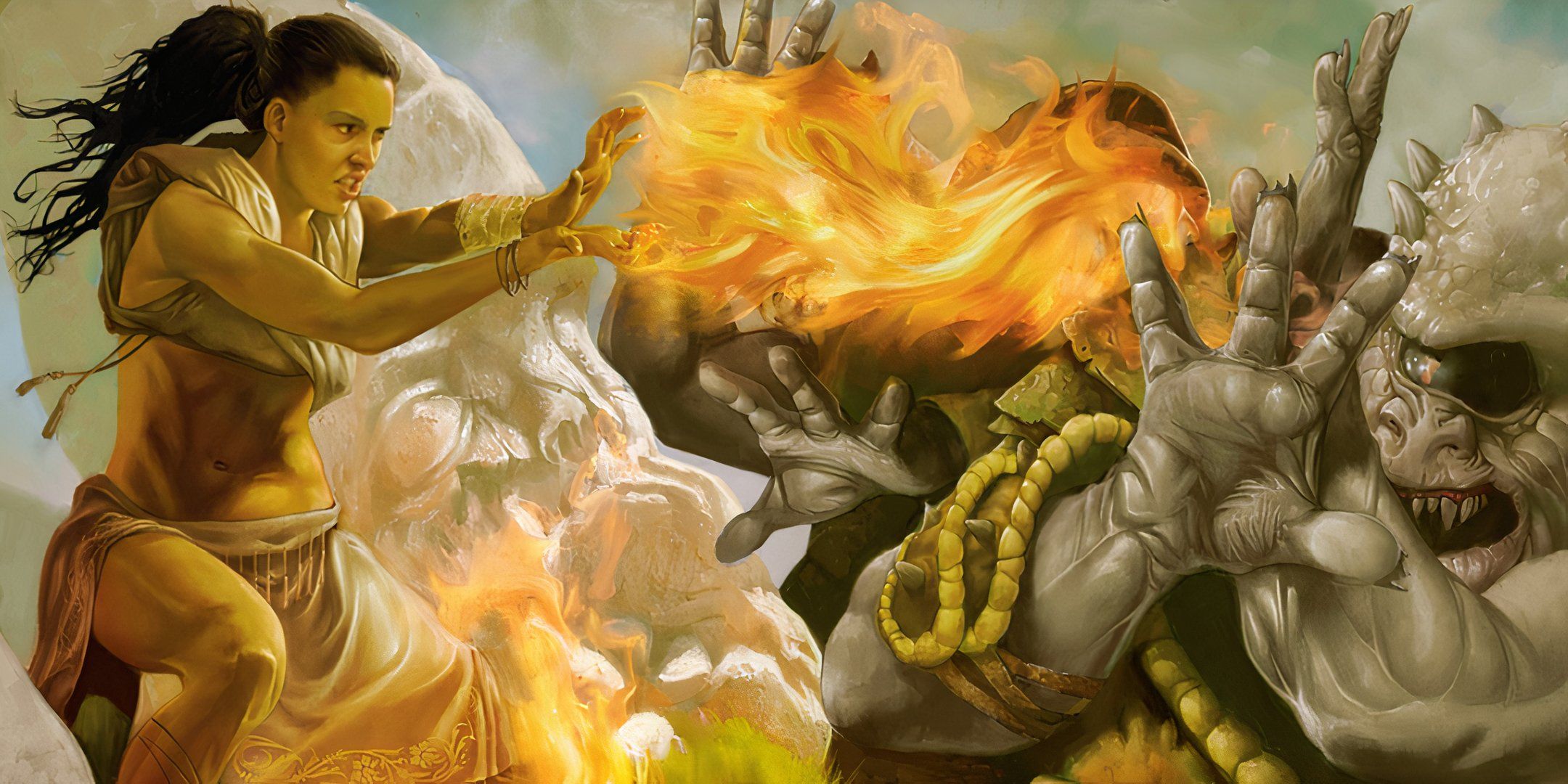
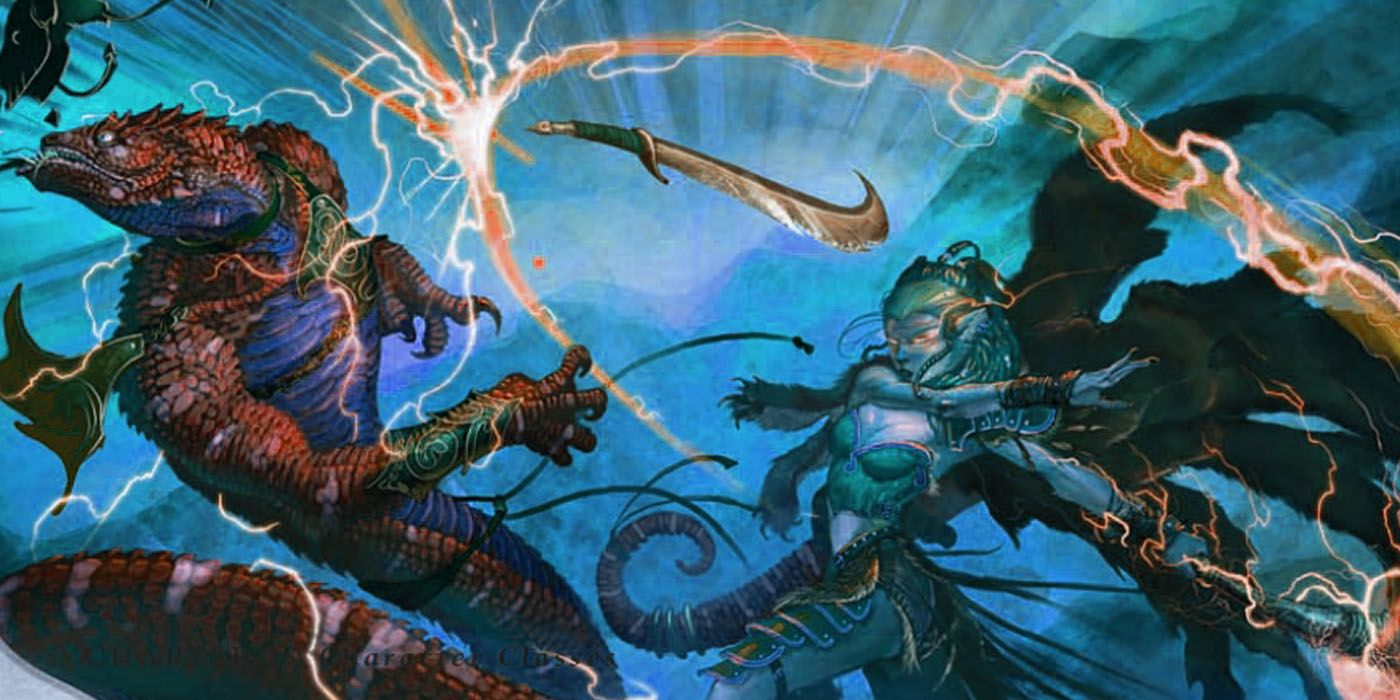
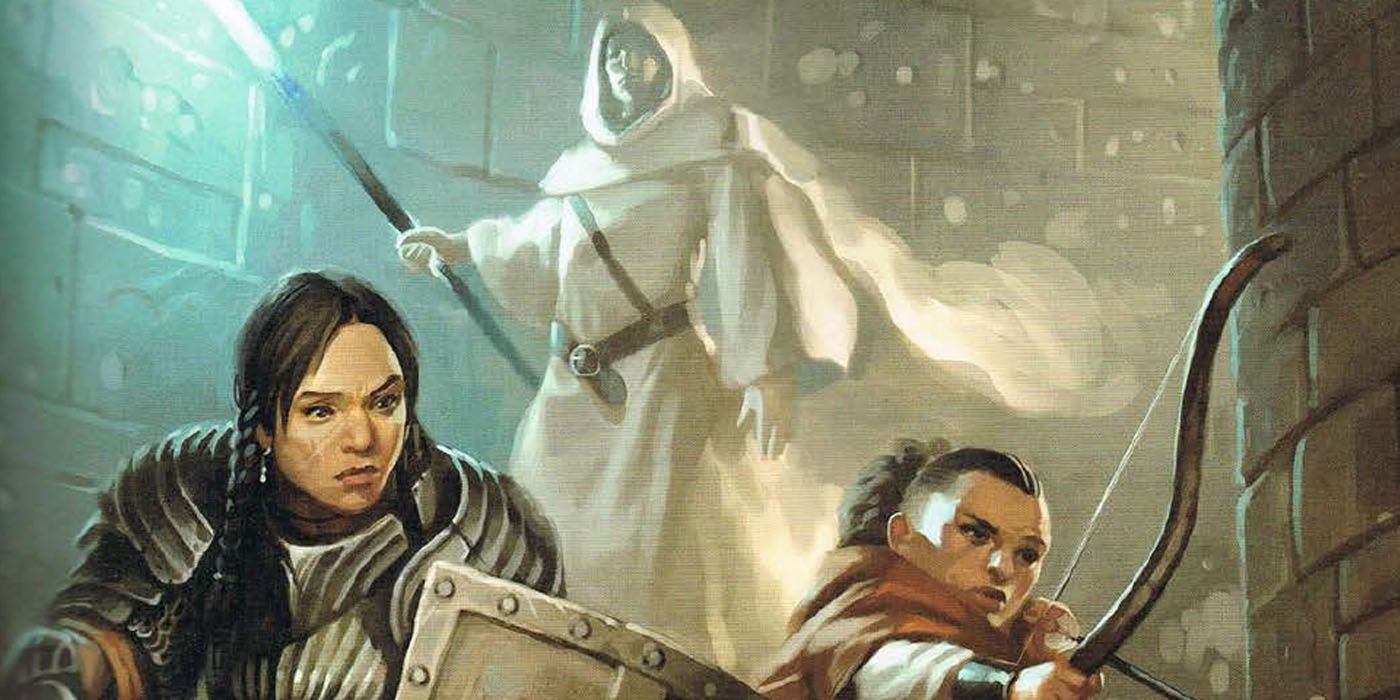
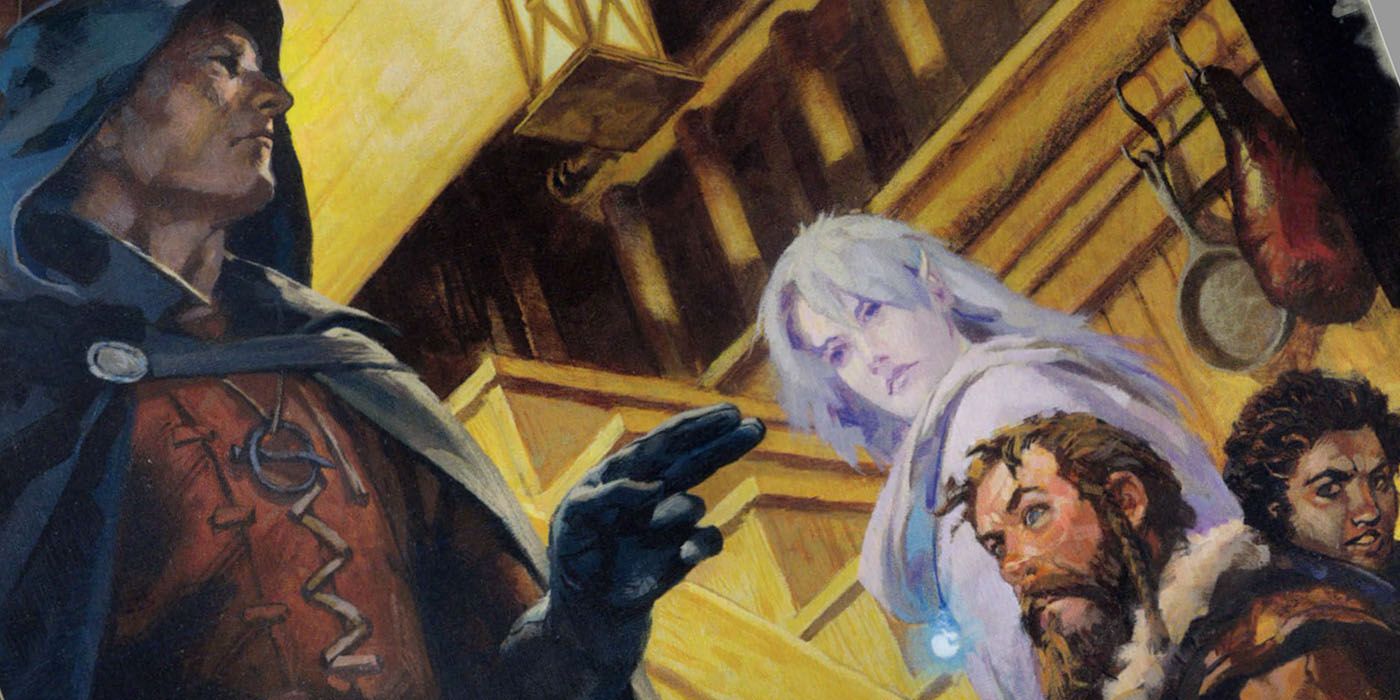
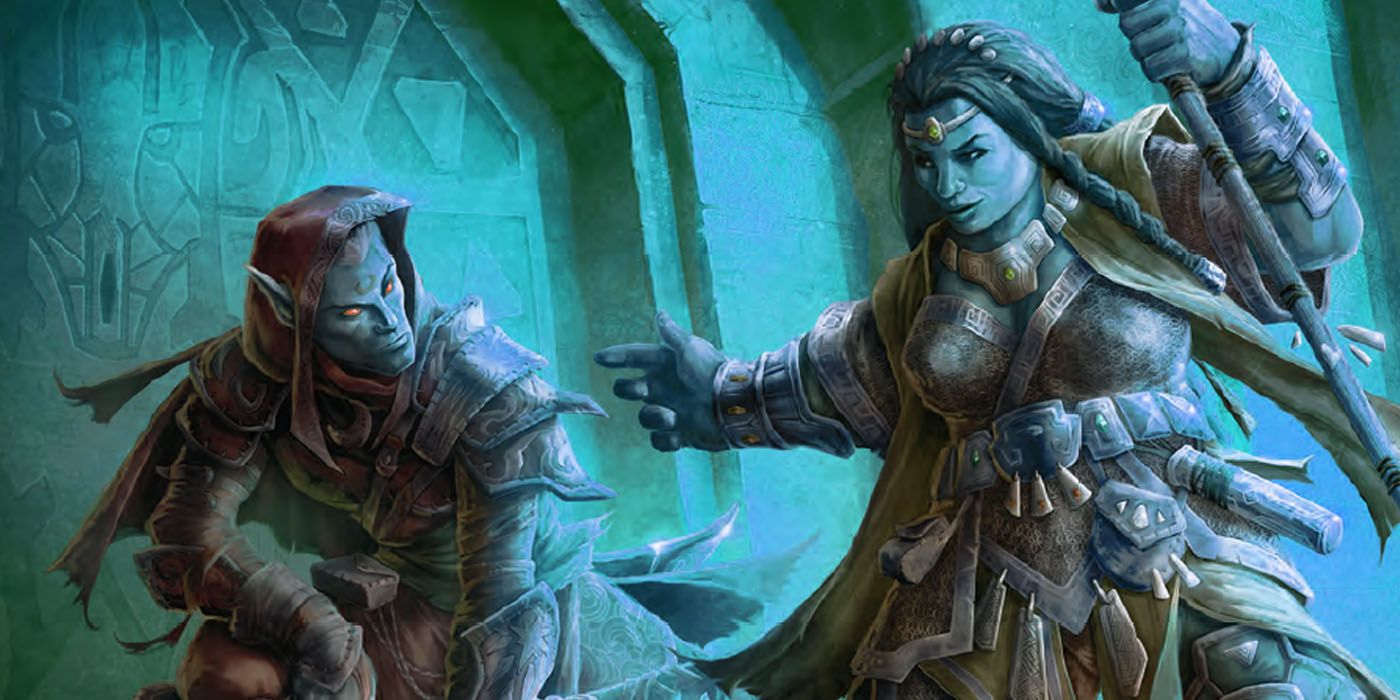
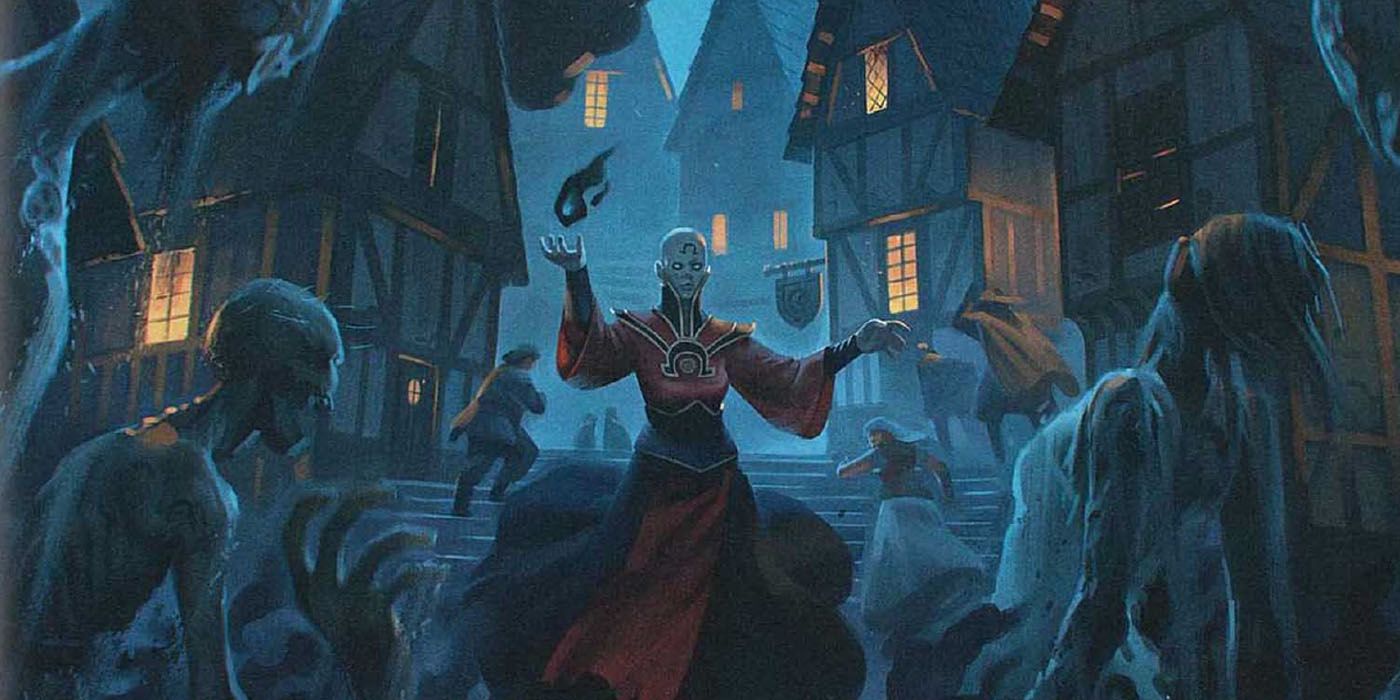
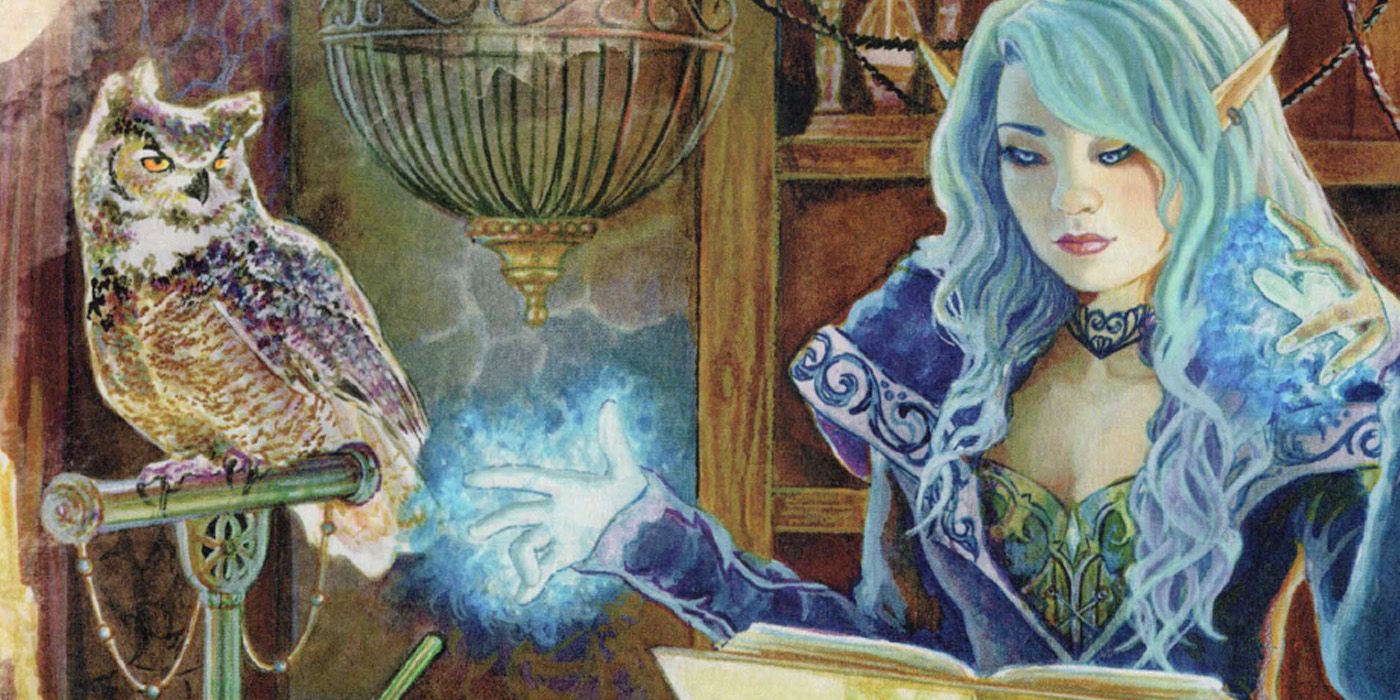
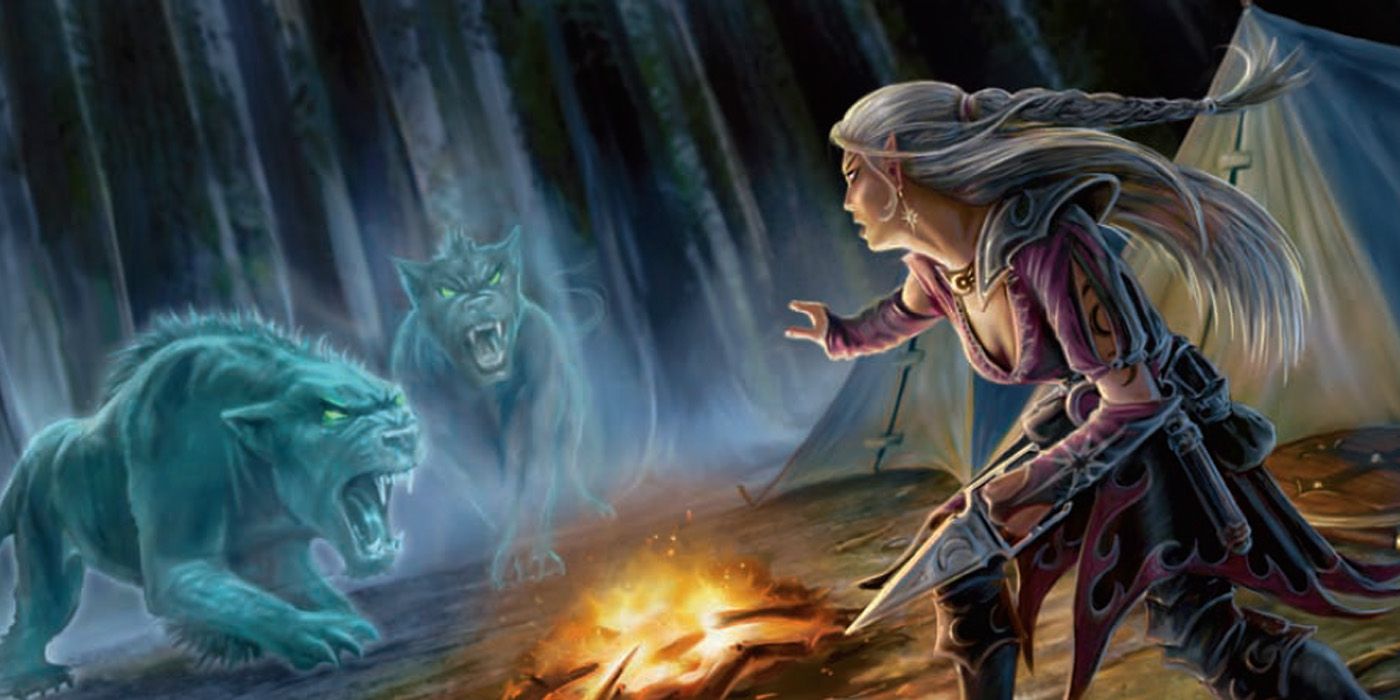
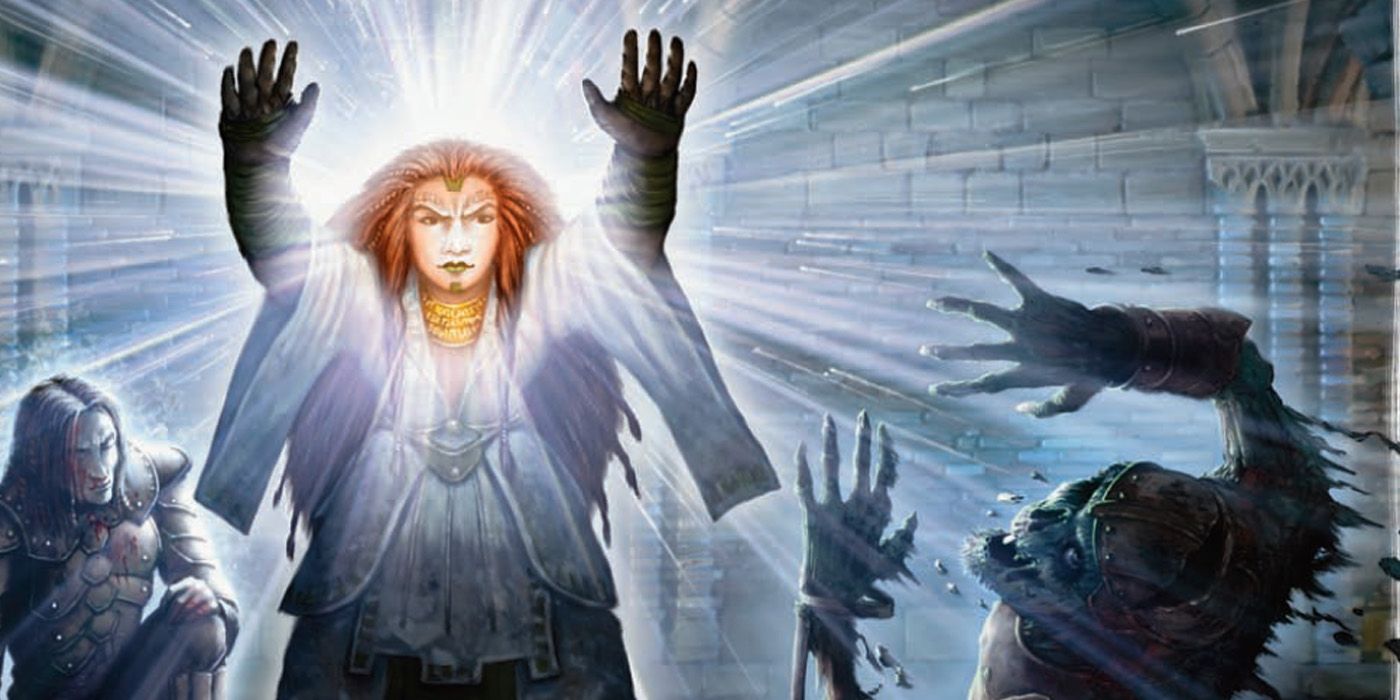
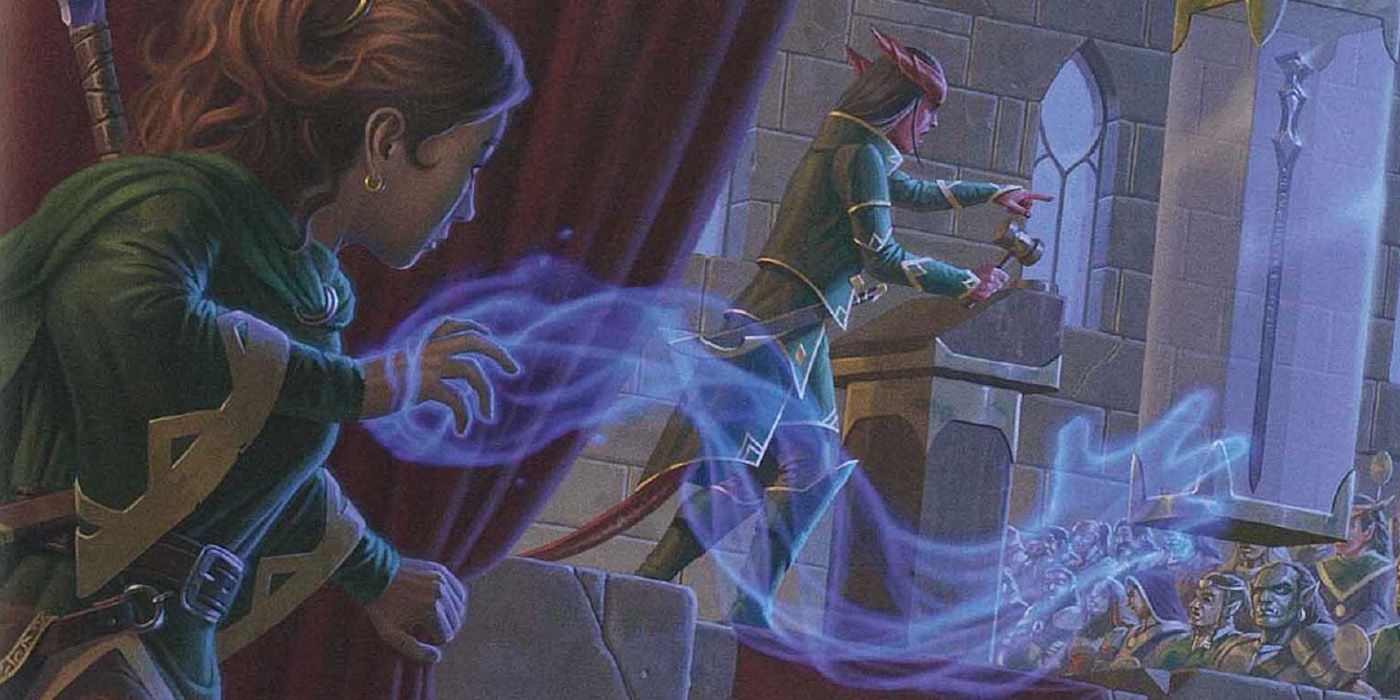
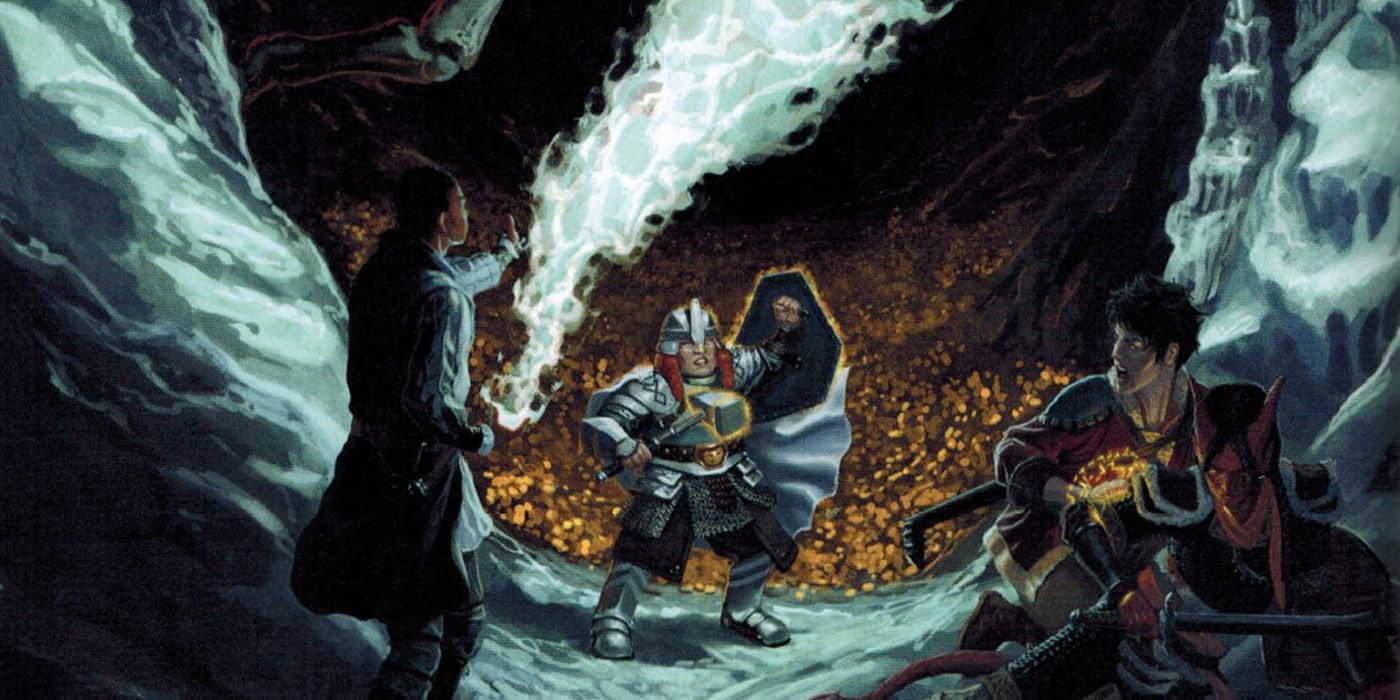




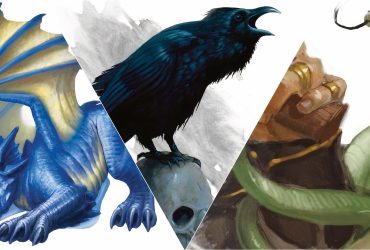
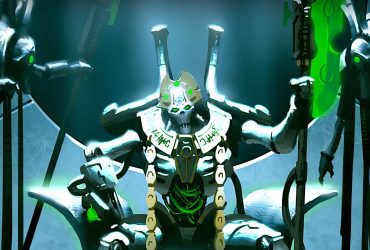

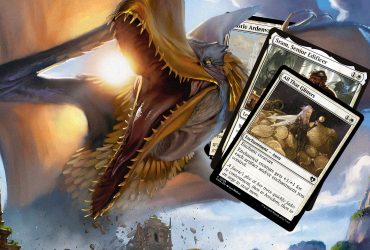
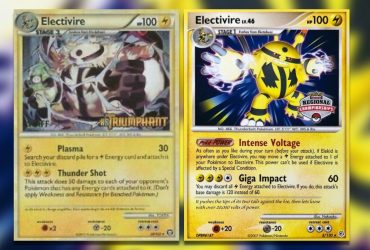

Leave a Reply